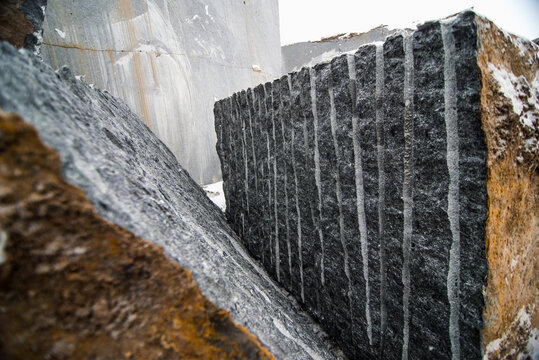A Trip Through Granite Quarries in South Africa: Introduction Nature's Artistry
A Trip Through Granite Quarries in South Africa: Introduction Nature's Artistry
Blog Article
Unveiling the Mysteries of Granite Quarrying: Where Strength and Sophistication Meet
The globe of granite quarrying is a realm where the raw strength of nature assembles with human virtuosity to create structures that stand the examination of time with an air of elegance. From the depths of quarries to the precise sprucing up in workshops, the process of changing granite into building marvels is an intricate dancing of practice and advancement. As we peer into the midsts of this ancient craft, we start to uncover the covert ins and outs that shape the extremely significance of our developed environment.
The Beginnings of Granite Quarrying
In the record of building background, the beginnings of granite quarrying are shrouded in a tapestry of ancient craftsmanship and geological marvels. Dating back to old Egypt and Mesopotamia, the removal of granite from quarries marked the beginning of a trip that would at some point cause the development of a few of the world's most legendary frameworks.
Granite quarrying's roots can be traced to the competent artisans who recognized the rock's resilience and aesthetic charm. Through a mix of primitive devices and large decision, these early quarry employees uncovered granite blocks that would become the building blocks of human beings.
As worlds developed, so did the strategies of quarrying granite. The Romans, renowned for their design expertise, developed sophisticated methods for drawing out granite to build monoliths, temples, and roads that stood the examination of time.
The tradition of these old quarrying methods remains to shape contemporary design, with granite remaining a sign of stamina and sophistication in building tasks around the world. (granite quarries in south africa)
Tools of the Quarrying Trade
The evolution of granite quarrying techniques from ancient civilizations to modern times highlights the vital role played by the tools of the quarrying trade in forming the market's practices. In ancient times, quarrying tools were basic, usually containing blades, hammers, and wedges made from materials like bronze or iron. These devices called for significant manpower and time to remove granite blocks from quarries.

In addition, the introduction of pneumatic tools and high-powered machinery has actually significantly lowered the physical labor required in quarrying operations, boosting employee security and efficiency. As the quarrying sector continues to innovate, the devices of the profession continue to be at the leading edge of driving development and forming the future of granite extraction.
Drawing Out Blocks of Granite
Making use of accuracy equipment and progressed techniques, the removal of granite obstructs this contact form from quarries has become an innovative procedure in the modern-day quarrying market. The initial step includes recognizing the place and size of the granite down payment to determine one of the most effective removal method. Once a suitable website is picked, the removal process begins with the boring of openings for the positioning of dynamites. Managed blasting techniques are then employed to disintegrate the granite into workable sections.

Sprucing Up and Completing Techniques
To attain a remarkable surface area on granite blocks, knowledgeable craftsmens use a collection of precise sprucing up and ending up strategies. After the preliminary extraction and shaping processes, the granite blocks undergo a thorough polishing phase to enhance their all-natural beauty and resilience.
In enhancement to sprucing up, completing strategies are used to more improve the granite's appearance. By very carefully picking and using these polishing and completing techniques, artisans can transform raw granite obstructs right into splendid pieces that showcase both strength and sophistication.

Environmental Effect and Sustainability
With the expanding emphasis on ecological awareness in the sector, granite quarrying techniques are significantly scrutinized for their influence on all-natural resources and long-term sustainability. Quarrying for granite can have considerable ecological ramifications. The extraction procedure often anchor involves making use of hefty equipment, nitroglycerins, and big amounts of water, resulting in environment damage, dirt disintegration, and water pollution. Furthermore, the transport of granite from quarries to processing centers generates carbon discharges, additionally adding to environmental deterioration. granite quarries in south africa.
To reduce these effects and guarantee sustainability in granite quarrying, industry stakeholders are embracing various steps. Implementing innovative technologies to reduce energy usage and water use, redeeming quarried land for ecological reconstruction, and promoting liable sourcing methods are some strategies being used. Additionally, accreditations such as the Woodland Stewardship Council (FSC) and the Management in Power and Environmental Layout (LEED) help consumers identify eco-friendly granite items.
Final Thought
Finally, granite quarrying is a process that calls for specialized tools and strategies to extract blocks of granite and brighten them to a high level of surface. While the environmental effect of quarrying can be significant, initiatives are being made to improve sustainability methods in the market. Generally, granite quarrying is a delicate balance in between taking advantage of the toughness and beauty of this all-natural stone while reducing its impact on the environment.
Report this page